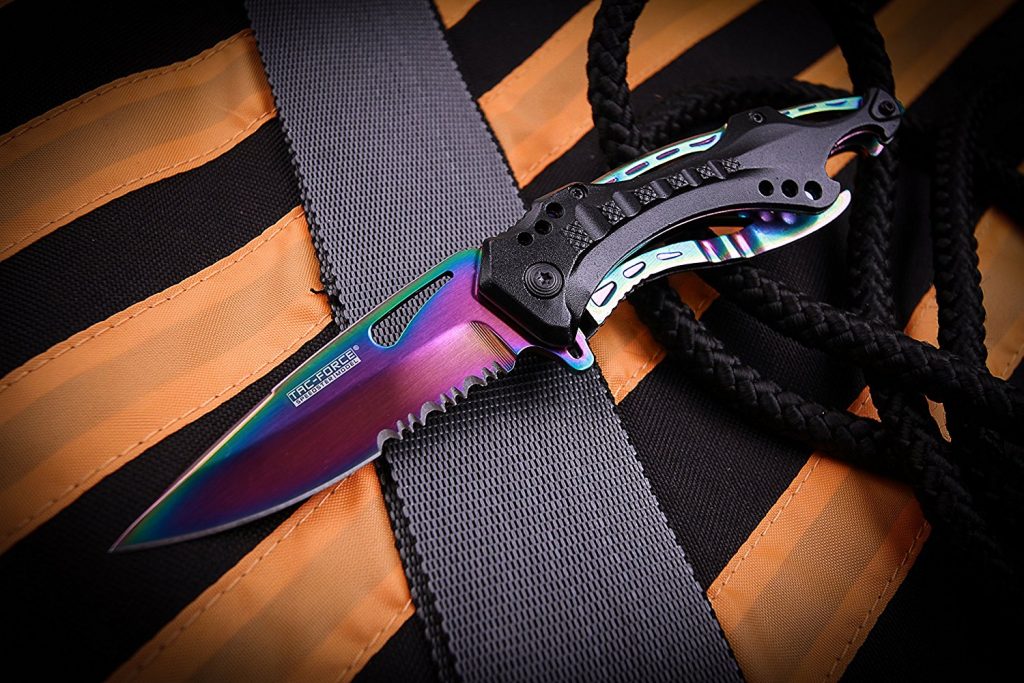[easyazon_image align=”center” height=”850″ identifier=”B0087DRWWQ” locale=”US” src=”https://nqo.psw.mybluehost.me/wp-content/uploads/2017/04/911sX4vCbRL.jpg” tag=”astraightar0d-20″ width=”1280″]Titanium is highly corrosion resistant, it is light weight, wear resistant, has heat and cold stability, it is a tough material and is highly flexible and is non-poisonous. It can be anodized by two main processes. The first process is by use of electrical current while the second is by use of heat. The electrical anodization produces even color of the knife while heat anodization creates random patterns and colors throughout the knife.
There are different ways to anodize, but basically, you need either a source of heat or a source of electricity to anodize titanium. Anodizing with electricity tends to produce a more even color tone throughout the titanium, while heat tends to create random patterns and colors throughout the material.
Anodizing titanium with electricity involves immersing the object to being anodized into a container with a titanium cathode inserted and filled with an electrolyte. A direct current charge is then passed through the electrolyte solution and will cause a microscopic oxide film to adhere to the part. The thickness of the oxide film determines the color. A direct current power supply of 0 to 125 volts is used. The wattage of the power supply will determine the surface area to be anodized and the speed of anodization. You also require a strip of titanium to be used as the cathode. The surface area of titanium strip should be greater than that of the knife blade or handle being anodized. As a safety precaution, the cathode can be covered with nylon webbing to avoid accidental contact with the part during immersion into the container. The electrolyte solution in the container can be a simple solution of 5% trisodium phosphate in distilled water. Leads are also used for the positive and negative terminals between the direct current power supply, cathode (titanium strip), and anode. A small hook made from titanium wire to which the part is attached for immersion is used as the anode. A small paintbrush with a metal ferrule is used for reverse-polarity brush anodizing.
Heat anodization of titanium requires a knife with a titanium handle, butane torch, needle-nose pliers, cloth to wipe down the blade and tools to disassemble your knife. The process starts by dissembling the knife followed by wiping off the fingerprints. The pliers are then used to grip the handle, which is then anodized by heating one portion at a time with the butane torch. The flared-out flame begins to turn orange which indicates that the titanium is getting to the correct temperature. When both the flame and titanium become orange, the rest of the handle can then be treated. Once the entire handle has been anodized, stick the handle under cold water for some seconds. This will finish the anodizing process. Polishing is not necessary after anodizing because it removes the anodized color.
Image Credit: Amazon.com
